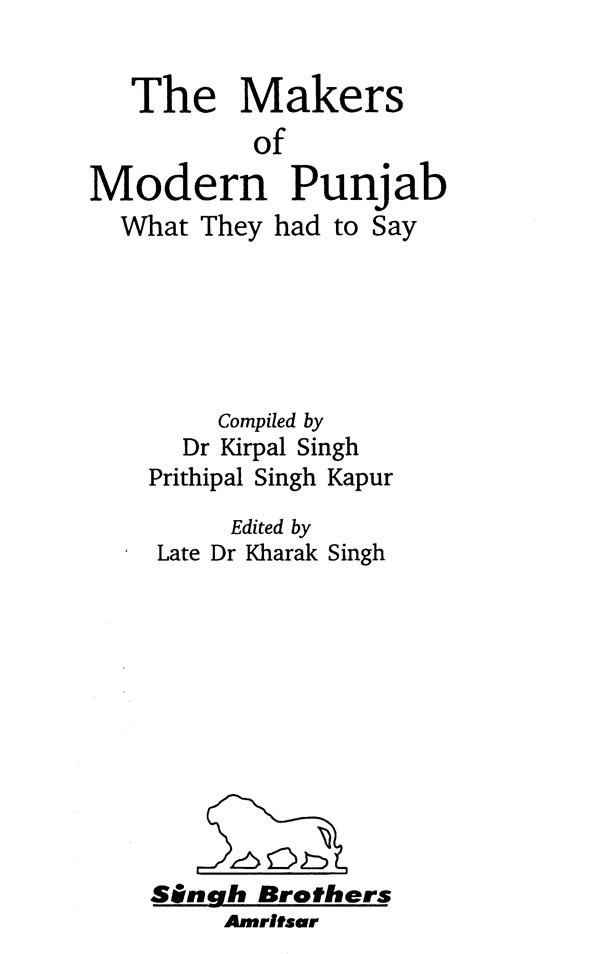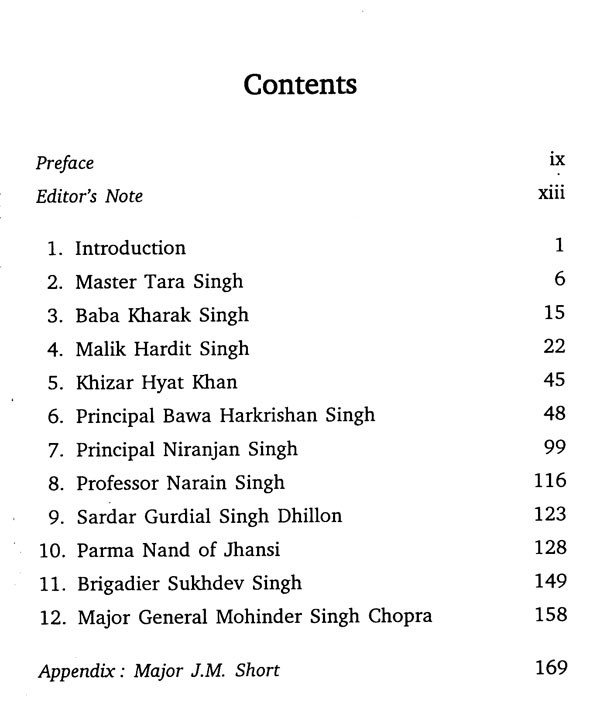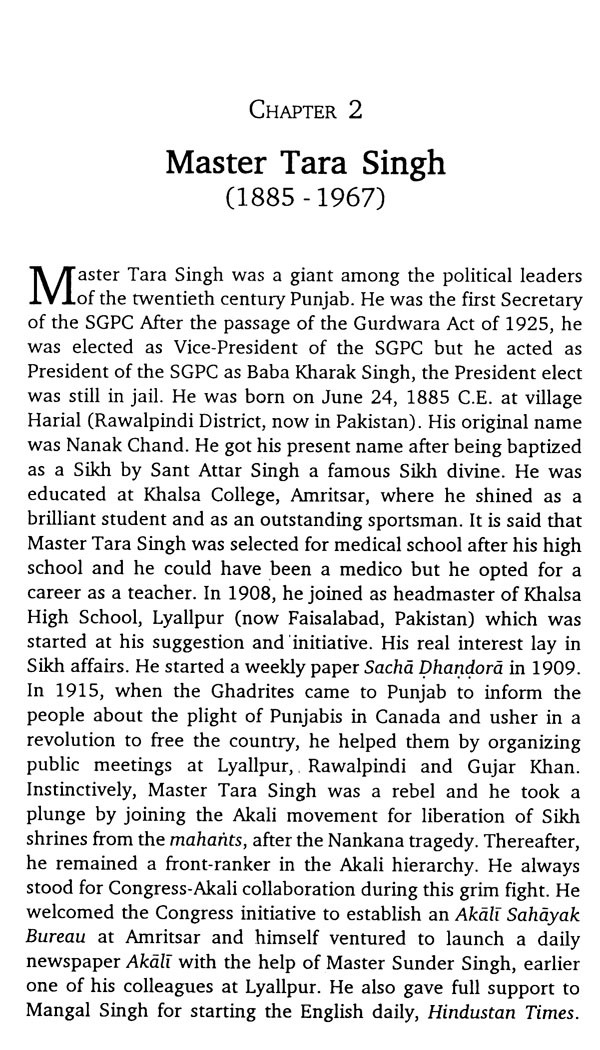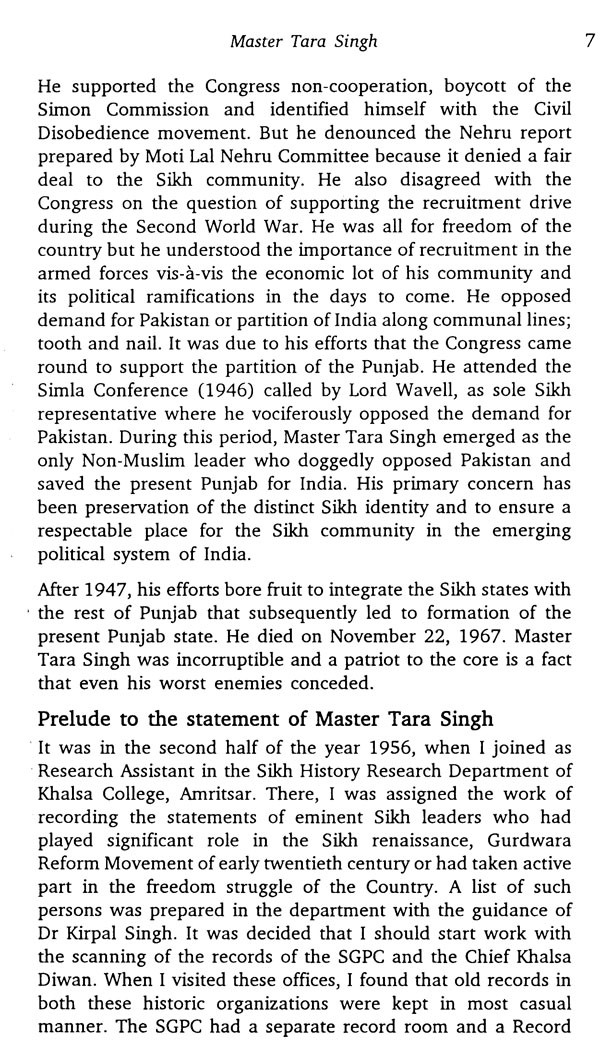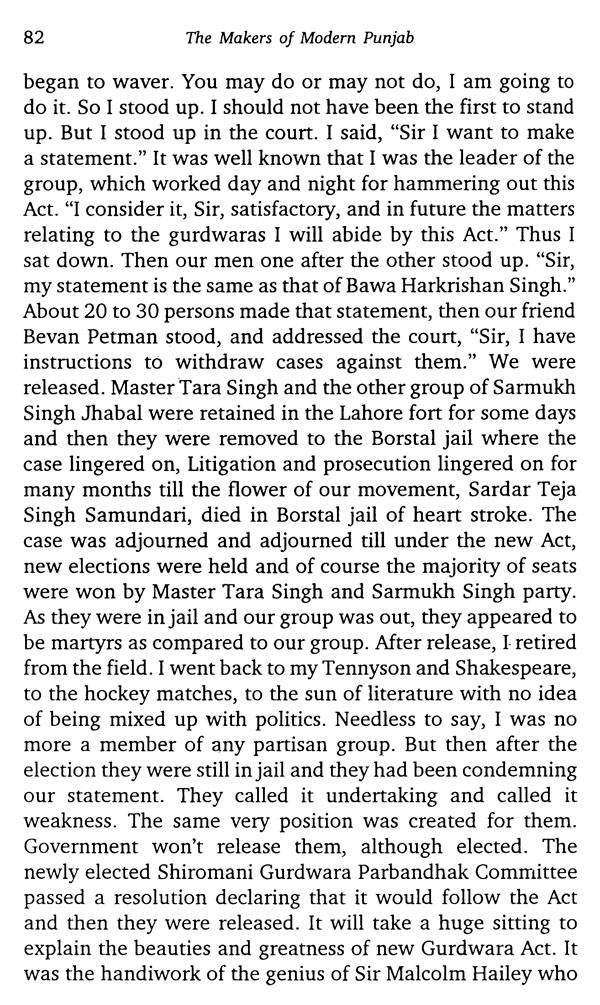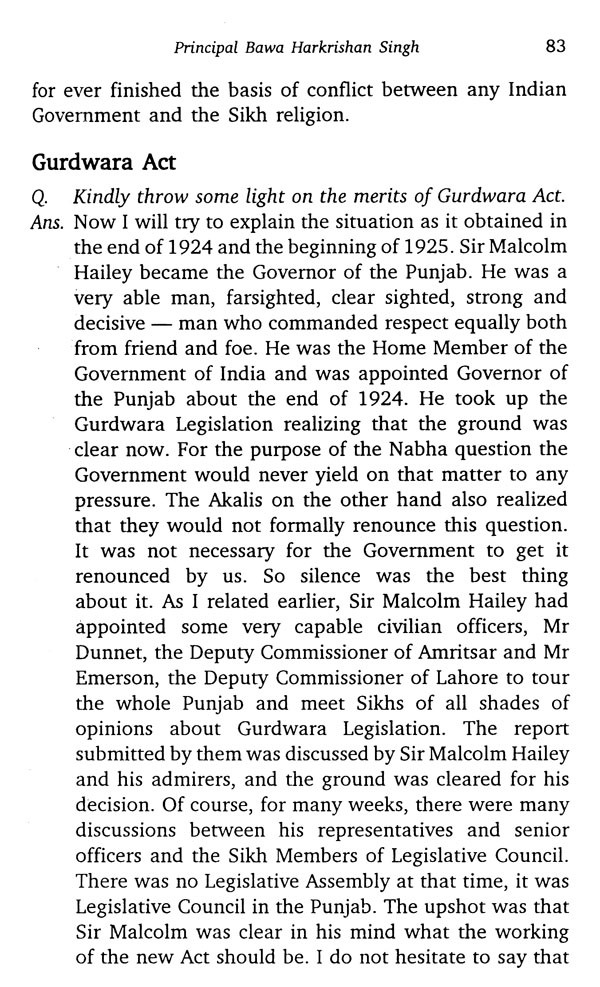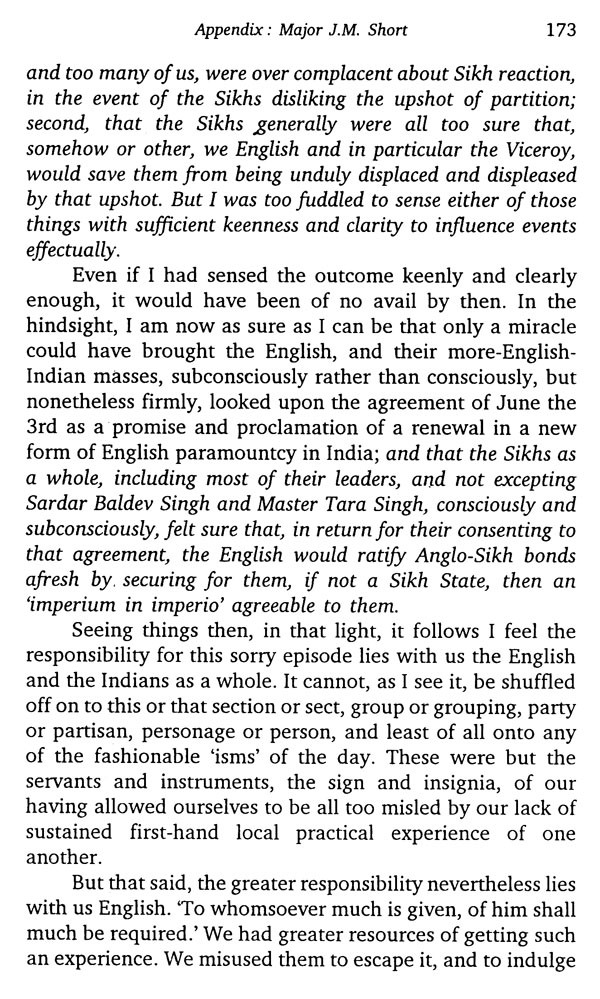About the Book This volume contains detailed interviews with 11 prominent leaders, intellectuals and officials who were at the helm of Punjab affairs in the first half of twentieth century. The interviews included in this volume constitute important and reliable primary source of history of the Punjab for the period to which they relate, yielding a mine of information including many an interesting revelations.
It is a first-ever systematic attempt made in the realm of history of Punjab to preserve the oral evidence and examine its credibility.
About the Author Dr. Kirpal Singh (born 1924) an inter- nationally acclaimed scholar of Sikh History, has retired as Professor & Head of the Department of Punjab Historical Studios, Punjabi University, Patiala. He succeeded Dr. Ganda Singh at the much coveted seat of Sikh Historical Research at Khalsa College, Amritsar in 1950 A.D. During his fifteen years long dedicated work at this place, he brought national recognition to this institute by getting nomination as member of the Indian Historical Records Commission. His proficiency in Persian language enabled him to handle source material on Sikh History with competence. The eminence that came his way brought him an enviable association with the Asiatic Society, Kolkata as member of its Governing Council (1992-97) and as Secretary, History and Archeology (1995-97). He remains engaged in serious research even after his retirement. The Shiromani Gurdwara Prabandhak Committee honored him in 1992 for his outstanding work on Sikh History.
Prithipal Singh Kapur, a well known historian and educationist, has been the Pro-Vice-Chancellor of Guru Nanak Devi University, Amritsar and Director, Punjab State University Text Book Board. He also served as Editor-in-Chief of the Encyclopaedia of Sikhism at Punjabi University, Patiala. He wrote/ edited more than a dozen books on Sikh history including Jassa Singh Ramgarhia (Pbi.), Punjab da Virsa (Pbi.), Master Tara Singh: Itihasak Pakh Ton (Pbi.), The Divine Master: Life & Teachings of Guru Nanak (edited).
Preface O contemporary history. In certain respects, it has proved better than the documents wherein some of the details are always missing. Usually all types of in-depth information can be gleaned during the interview with the informant. Hence, Oral History is a more comprehensive source for construction of history.
The year C.E. 1947 is a landmark in the history of Southeast Asia as India and Pakistan (including the present Bangladesh) became sovereign countries. After independence, it was realized that the British Government had not properly preserved records of freedom struggle as these were kept in a section marked as Thaggi and Dacoity in the National Archives, previously known as Imperial Record Office, New Delhi. Determined efforts were set afoot to collect material regarding freedom struggle. In the wake of this exercise, it was also decided to collect statements of those who were associated with the movement.
There has been a Sikh History Research Department in existance at Khalsa College, Amritsar since C.E. 1930. It is perhaps one of the oldest history research centres in our region. I was selected to head this Department in 1950. The tragedies of partition were still fresh in the minds of the people. Therefore, I got one research assistant appointed to record the statements of refugees from the West Pakistan.. These statements were compiled in the form of a book, which was, published by the Chief Khalsa Diwan, Amritsar under the title Shahidian.
Introduction Oral material obtained by recording the spoken words generally by means of planned tape-recorded interviews of persons deemed to harbour hitherto available information worth preserving...it is more than a tool and less than a discipline." "It got established in C.E. 1948 as a modern technique for historical documentation when the Columbia University historian Allan Nevin began recording the memoirs of persons significant in American life.2 Nevin noticed that under the impact of science and technology the people were more used to frequent travel and the use of telephone, which had become the common mode of communication and that the people in general were abandoning the habit of diary-keeping or letter-writing. In the process, the future historians were being deprived of information of two most important sources. Nevin was convinced that this loss could be minimized if skilled interviewers with tape recorders collected the reminiscences of knowledgeable persons. Viewed from this perspective, Oral History was conceived as an effective tool 'to utilize technology to counter the inroads of technology'.
According to Jan Vansina, the author of Oral Tradition - A Study of Historical Methodology, Oral History is the study of Oral tradition that occupies a special place in the various kinds of historical sources.
**Contents and Sample Pages**
